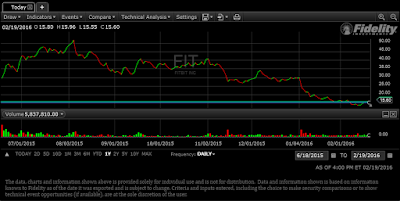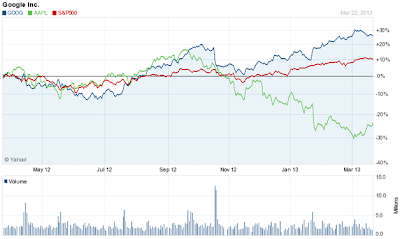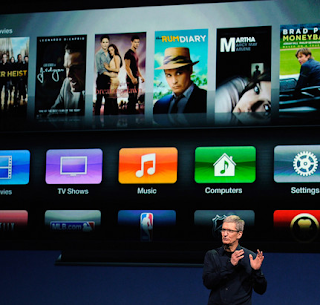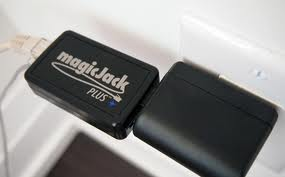 Cisco (Nasdaq: CSCO) shares shot up and closed 16% higher Thursday, after the company posted results Wednesday afternoon. Simply put, the long-suffering Cisco beat the beaten down Street estimate, and offered some hope that the company’s simplification plan might create significant economic value in the quarters ahead, and market value by natural progression. The company, which was the poorest pooch of the Dow dog pack, looks to have better days ahead of it now.
Cisco (Nasdaq: CSCO) shares shot up and closed 16% higher Thursday, after the company posted results Wednesday afternoon. Simply put, the long-suffering Cisco beat the beaten down Street estimate, and offered some hope that the company’s simplification plan might create significant economic value in the quarters ahead, and market value by natural progression. The company, which was the poorest pooch of the Dow dog pack, looks to have better days ahead of it now.
 Our founder earned clients a 23% average annual return over five years as a stock analyst on Wall Street. "The Greek" has written for institutional newsletters, Businessweek, Real Money, Seeking Alpha and others, while also appearing across TV and radio. While writing for Wall Street Greek, Mr. Kaminis presciently warned of the financial crisis.
Our founder earned clients a 23% average annual return over five years as a stock analyst on Wall Street. "The Greek" has written for institutional newsletters, Businessweek, Real Money, Seeking Alpha and others, while also appearing across TV and radio. While writing for Wall Street Greek, Mr. Kaminis presciently warned of the financial crisis.
Relative tickers: Nasdaq: CSCO, Nasdaq: JNPR, Nasdaq: RVBD, Nasdaq: ARUN, Nasdaq: FNSR, Nasdaq: SMCI, Nasdaq: BBOX, Nasdaq: DGII, Nasdaq: ELON, Nasdaq: EXTR, Nasdaq: GCOM, OTC: HUTC.OB, Nasdaq: LTRX, OTC: LTTC.OB, Nasdaq: NWK, Nasdaq: PTIX, Nasdaq: SWIR, Nasdaq: SILC, Nasdaq: SCMR, Nasdaq: VPF, OTC: ZWBC.PK, OTC: WGAT.PK, NYSE: AIQ, Nasdaq: AONE, Nasdaq: IDSA, Nasdaq: INSM, NYSE: KV-A, Nasdaq: MFNC, Nasdaq: HGSH, AMEX: BHO, NYSE: TLB, Nasdaq: CARB, Nasdaq: TTHI, Nasdaq: AMPE, Nasdaq: CECE, NYSE: IL, NYSE: SOL, Nasdaq: AFFM, Nasdaq: USCR, Nasdaq: TPCG, NYSE: BAC, NYSE: VHI, AMEX: IDI, Nasdaq: CXPO, Nasdaq: EDAC, Nasdaq: IPHI, Nasdaq: TCHC, Nasdaq: ADES, OTC: ALBCF.PK, NYSE: BUD, Nasdaq: BONE, NYSE: BYI, Nasdaq: BIOF, Nasdaq: BODY, Nasdaq: EPAY, NYSE: BGG, NYSE: EAT, NYSE: BR, Nasdaq: CECE, Nasdaq: CHNR, Nasdaq: CPHI, Nasdaq: CIDM, Nasdaq: CDTI, Nasdaq: COSI, NYSE: DV, Nasdaq: DGLY, Nasdaq: ESTE, Nasdaq: DIET, Nasdaq: RDEN, Nasdaq: ELTK, Nasdaq: EMAN, Nasdaq: GENC, Nasdaq: GCFB, Nasdaq: HOKU, Nasdaq: JSDA, NYSE: KSS, NYSE: MCP, NYSE: JWN, Nasdaq: NVDA, NYSE: PGR, Nasdaq: QPSA, Nasdaq: RRGB, Nasdaq: RENN, Nasdaq: SPNS, NYSE: SLE, NYSE: TK, NYSE: THI, Nasdaq: URRE and NYSE: WEN.
Cisco Systems (Nasdaq: CSCO) – Every Dog has its Day
Cisco’s revenues rose 3%, to $11.2 billion, which was about $300 million higher than the revenue estimates of analysts on average, based on Factset data. Last month, the company said it would let 6,500 people go, and it has begun shedding non-core business efforts like its Flip Video camcorder. Excluding the cost of these measures, Cisco said it would have earned $0.40 a share last quarter, which was 2 cents above the Street view. Cisco even said it might generate 4% revenue growth in the current quarter, also above the Street outlook.
There was but one negative point and warning from John Chambers, the company’s embattled CEO, and that is that government sourced revenue streams are threatened. Indeed, its public sector sales dropped 7%, and unfortunately, this segment represents about a fifth of the company’s business.
Cisco Systems was the dog of the Dow, down 32% before Thursday for the year-to-date. That measured against the Dow’s 7% drop-off. Every dog has his day, though, and today is Cisco’s. It looks like its economic value creating strategy will serve as an offset against the impact of broader economic weakness. Thus, CSCO’s return outlook has some alpha in it to overcome the beta beat-down from the broader economy and market.
This stock epitomizes the appeal of value in a growth troubled environment. It should attract capital as a result, like it clearly has today. The company’s PEG ratio, before the day’s move, was sub-1.0 (about 1.2X now), and growth looks like it has the potential to surprise as the company sheds burdensome business lines, cuts costs and spurs the top line. The PEG ratio we quoted here is based on about a 10% growth forecast over the next five years (Yahoo Finance), but Cisco produced 21% operating EPS growth in this latest quarter, based on the $0.40 figure. As a result, I cannot help but like it as a sector representative for well diversified portfolios.
This article should interest investors in
networking and computer device companies, including Cisco Systems (Nasdaq: CSCO), Juniper Networks (Nasdaq: JNPR), Riverbed Technology (Nasdaq: RVBD), Aruba Networks (Nasdaq: ARUN), Finisar (Nasdaq: FNSR), Super Micro Computer (Nasdaq: SMCI), Black Box (Nasdaq: BBOX), Digi International (Nasdaq: DGII), Echelon (Nasdaq: ELON), Extreme Networks (Nasdaq: EXTR), Globecomm (Nasdaq: GCOM), Hughes Telematics (OTC: HUTC.OB), Lantronix (Nasdaq: LTRX), Lattice (OTC: LTTC.OB), Network Equipment Technology (Nasdaq: NWK), Performance Technologies (Nasdaq: PTIX), Sierra Wireless (Nasdaq: SWIR), Silicom (Nasdaq: SILC), Sycamore Networks (Nasdaq: SCMR), Valpey-Fisher (Nasdaq: VPF), WideBand (OTC: ZWBC.PK), WorldGate Communications (OTC: WGAT.PK).
Other big gainers Thursday included Alliance Healthcare (NYSE: AIQ), A123 Systems (Nasdaq: AONE), Industrial Services of America (Nasdaq: IDSA), Insmed (Nasdaq: INSM), K-V Pharmaceutical (NYSE: KV-A), Mackinac Financial (Nasdaq: MFNC), China HGS Real Estate (Nasdaq: HGSH), B+H Ocean Carriers (AMEX: BHO), Talbots (NYSE: TLB), Carbonite (Nasdaq: CARB), Transition Therapeutics (Nasdaq: TTHI), Ampio Pharmaceuticals (Nasdaq: AMPE), CECO Environmental (Nasdaq: CECE), IntraLinks (NYSE: IL), Renesola (NYSE: SOL), Affirmative Insurance (Nasdaq: AFFM), U.S. Concrete (Nasdaq: USCR), TPC Group (Nasdaq: TPCG), Bank of America (NYSE: BAC), Valhi (NYSE: VHI), SearchMedia Holdings (AMEX: IDI), Crimson Exploration (Nasdaq: CXPO), EDAC Technologies (Nasdaq: EDAC), Inphi Corp. (Nasdaq: IPHI).
The rest of the EPS schedule includes: 21st Century Holding (Nasdaq: TCHC), ADA-ES (Nasdaq: ADES), Alibaba.com (OTC: ALBCF.PK), Anheuser-Busch InBev (NYSE: BUD), Bacterin Int’l (Nasdaq: BONE), Bally Technologies (NYSE: BYI), Biofuel Energy (Nasdaq: BIOF), Body Central (Nasdaq: BODY), Bottomline Technologies (Nasdaq: EPAY), Briggs & Stratton (NYSE: BGG), Brinker Int’l (NYSE: EAT), Broadridge Financial (NYSE: BR), Ceco (Nasdaq: CECE), China Natural Resources (Nasdaq: CHNR), China Pharma (Nasdaq: CPHI), Cinedigm Digital (Nasdaq: CIDM), Clean Diesel Technologies (Nasdaq: CDTI), Cosi (Nasdaq: COSI), DeVry (NYSE: DV), Digital Ally (Nasdaq: DGLY), Earthstone Energy (Nasdaq: ESTE), eDiets.com (Nasdaq: DIET), Elizabeth Arden (Nasdaq: RDEN), Eltek (Nasdaq: ELTK), Emagin (Nasdaq: EMAN), Gencor (Nasdaq: GENC), Granite City Food (Nasdaq: GCFB), Hoku (Nasdaq: HOKU), Jones Soda (Nasdaq: JSDA), Kohl’s (NYSE: KSS), Molycorp (NYSE: MCP), Nordstrom (NYSE: JWN), Nvidia (Nasdaq: NVDA), Progressive (NYSE: PGR), Quepasa (Nasdaq: QPSA), Red Robin Gourmet (Nasdaq: RRGB), Renren (Nasdaq: RENN), Sapien’s (Nasdaq: SPNS), Sara Lee (NYSE: SLE), Teekay (NYSE: TK), Tim Horton’s (NYSE: THI), Uranium Resources (Nasdaq: URRE), Wendy’s (NYSE: WEN), and more.
Please see our disclosures at the Wall Street Greek website and author bio pages found there. This article and website in no way offers or represents financial or investment advice. Information is provided for entertainment purposes only.

Labels: Editors_Picks, INDUSTRY-Networking-and-Communication-Devices, SECTOR-Technology, Stock_Picks, Stocks
























































